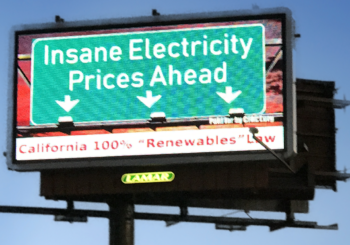 Meteorological summer (June, July, and August) is now over and it’s time to check how the summer temperatures compare with other years.
Meteorological summer (June, July, and August) is now over and it’s time to check how the summer temperatures compare with other years.
…snip…
This summer will go down in that database and in NOAA’s official records as being slightly cooler than average.
Somewhat related to this, a reader sent me a link to a New York Times’ interactive website that claims to provide the number of days above 90°F each year for cities across the country.
The results are produced for the Times by an outfit (some might call it an environmental pressure group) called the Climate Impacts Lab.
Since I build numerous datasets of this type, I took a look. The website asks you for the town and year in which you were born, then provides a time series purportedly showing the number of 90°F days per year since your birth and how that has increased.
Though a native of California, I have lived in Huntsville for more years than any other place, so I put in my birth year and Huntsville as my hometown.
Immediately I became suspicious when their dataset started only recently in 1960 (and a few years after my birth!) Evidently the Times and the Climate Impacts Lab don’t want to deal with folks older than 58.
For Huntsville and Montgomery, here are their results – kind of scary. It appears that the number of 90°F days has risen to their highest levels ever.
I’m told that in 1960 Huntsville had about 45 days above 90°F but by 2017 it was 57 days and rising.
Then, to make matters even scarier, they use climate model projections to 2090 to tell me that when I’m “80” in 2040, there will be 73 such hot days in Huntsville as seen below. Yikes!
Before you sell your house and move to Canada, let’s take a look at the real story.
Having built many climate datasets of Alabama, some starting as early as 1850, I knew the Times story was designed to create alarm and promote the claim that humans who use carbon-based energy (gasoline, natural gas, coal) to help them live better lives are making our summers ever more miserable.
Be aware reader, this webtool is not designed to provide accurate information.
First of all, climate data for Alabama began in the 19th century, not 1960.
In 2016, Dr. Richard McNider (Alabama’s former State Climatologist) and I published a carefully constructed time series of summer temperatures for the state starting from 1883 that utilized numerous station records, some that even the federal government had not archived into its databases (which is the most common source for outfits like the Climate Impacts Lab.)
I’ve updated that work to include summer temperatures through 2018 – the result is below. Not only are summer daytime temperatures not rising, but they have also actually fallen over the last 136 years.
Hmmm … after looking at the graph, why do you suppose the Climate Impacts Lab decided to start their charts in 1960?
We went a step further in that paper and demonstrated that climate models failed completely to replicate the downward temperature trend in Alabama over the past 120 years – 76 different models with a 100% failure rate.
Would you trust these same models to tell you about the future as the Times does? Why did they not check the models for validity?
Now, what about the number of “hot” (or in Alabama, we would say “typical”) 90°F days? For Alabama and the nation, I’ve calculated the average value per station each year since 1895.
The results below speak for themselves (there is no increase of days hotter than 90°F) and expose the misinformation provided through the Times.
Providing accurate information on Alabama’s climate is what we do in our office.
In fact, using real data, I can’t even come close to reproducing the images that the Climate Impacts Lab did that show the 2010s as having the most 90°F days in Alabama; I’m guessing they are using some theoretical output rather than sticking with observations.
Notice how smooth their graph is compared to real data – it doesn’t look real to me. I’ll check and follow-up as I can, but something is fishy.
This is a great state in which people can enjoy life and in which businesses can operate – and our climate resources are one of the reasons we are doing so well in recruitment.
Occasionally though the time comes when I must address claims made by those whose intention is not to inform but to promote false alarm – this usually happens when an environmental pressure group generates a press release whose dramatic statements are published by a willing media (without any fact-checking.)
This is one of those times, and I’m sure it will not be the last.
Read more at The Alabama Climate Report























The New York Times is colluding with Climate Impacts Lab to produce another temperature “hockey
stick” for your home town. More climate propaganda to support the climate change hoax.
The New York Pravda(Times)LIES LIES LIES LIES LIES LIES LIES LIES LIES LIES LIES LIES LIES